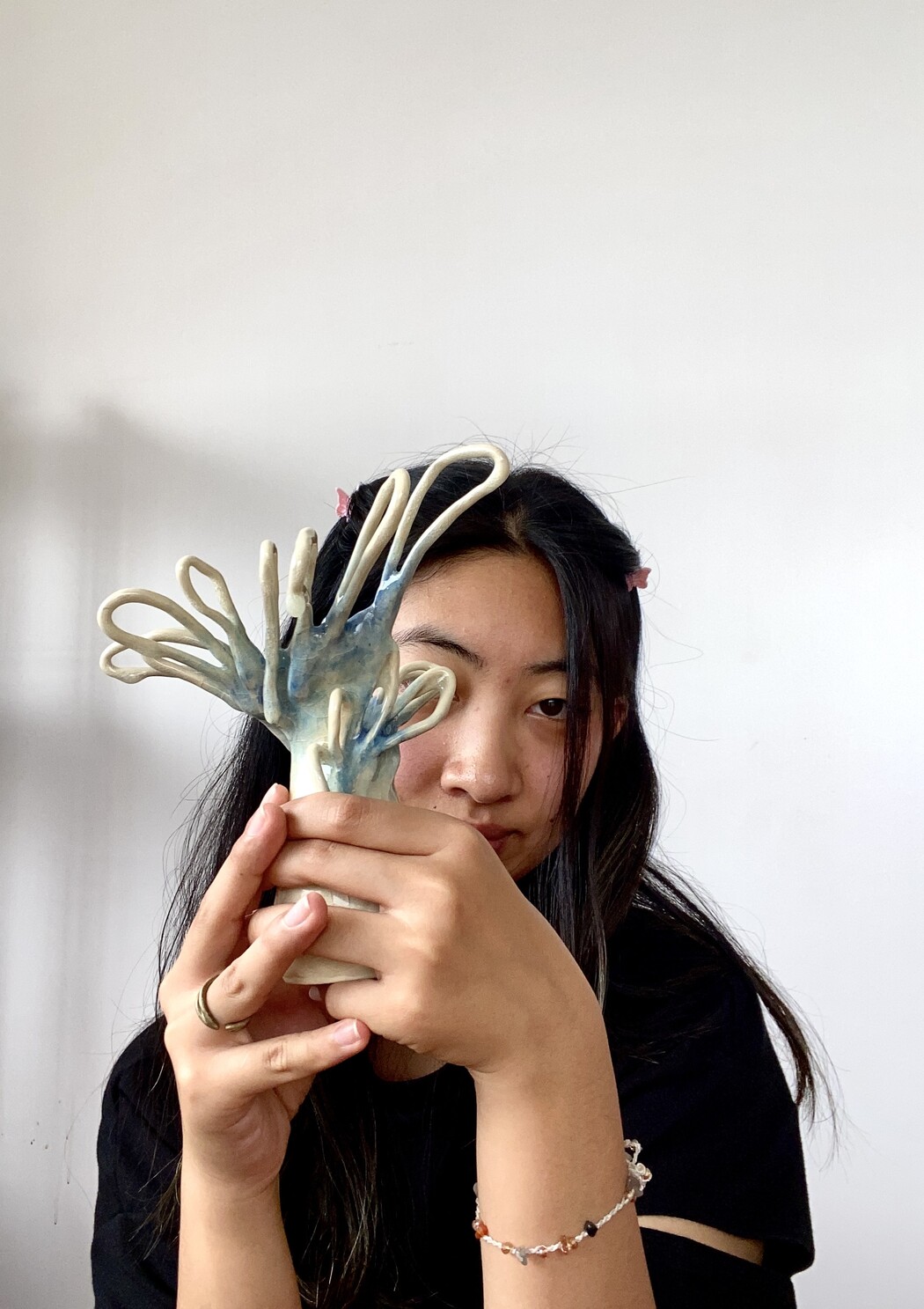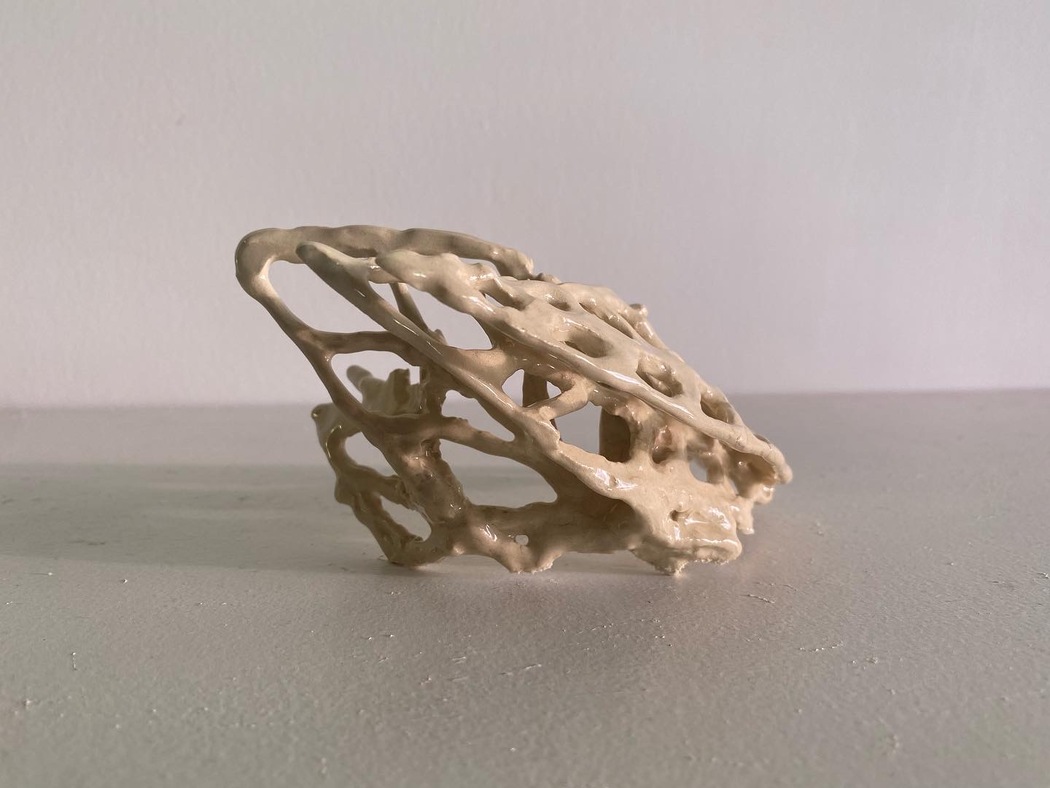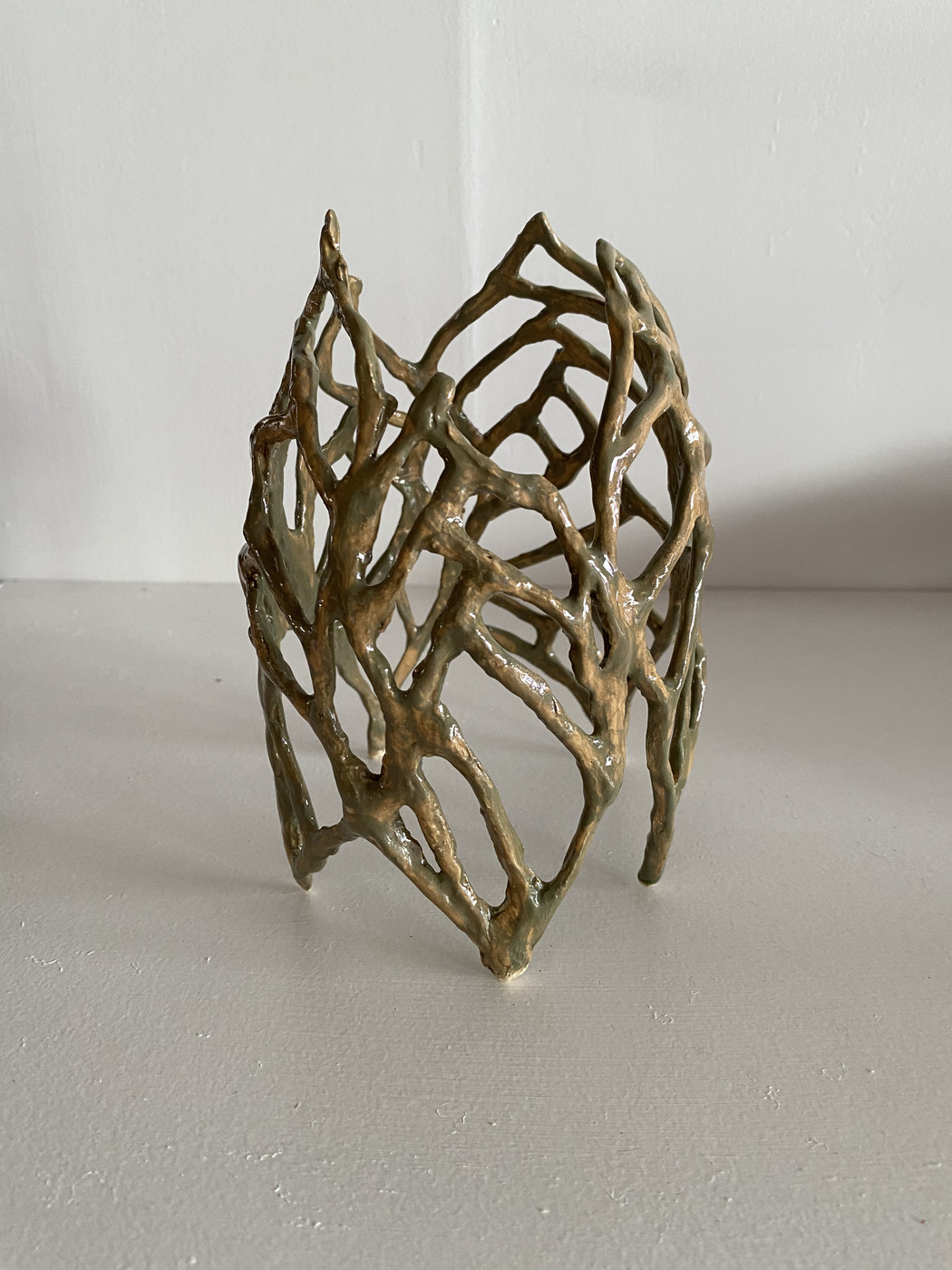Annie Yu
Year of birth: 2001
Where do you live: Auckland, New Zealand
Your education: BA (Industrial Design), Auckland University of Technology, New Zealand (2022)
Describe your art in three words: emergent, naturalistic, unexpected
Your discipline: Ceramic Sculpture
Instagram

Can you share more about your journey from painting as a child to discovering ceramics while studying industrial design?
I started painting when I was a kid, mostly using acrylic paint, but also other mediums like sketching, watercolour and oil paint. I remember really enjoying the process of getting lost in creating and feeling accomplished after completing new artworks throughout my childhood. I was really lucky to have encouragement from my parents and friends to continue practicing, refining and exploring artistically.
Later on, I attended a few ceramics programmes for kids during a handful of school holidays and thoroughly loved it, but it kind of trailed off when I got older. Oddly, it wasn’t until going to study a Bachelor of Industrial Design where I rediscovered my love of ceramics in the university’s wet labs. I played with clay in my free time between lectures and assignment work as a way to procrastinate, and got excited by the endless possibilities. Making things like jewellery that I could use felt wonderfully direct and connected me more to these objects. After graduating, I joined a collective ceramics studio as a way to continue exploring ideas through clay in a dedicated space.
You mentioned exploring the relationship between natural and geometric forms. What draws you to this interplay?
Exploring the intersection between natural and geometric forms allows for some new harmony to arise both visually and conceptually. I’ve always been drawn to the concept of human made products, artifacts, systems being integrated harmoniously with nature, and aim to convey this idea in my work. It’s a chance to make something that is not simply identifiable as only natural or only man made, but a fusion of natural intelligence and beauty, and geometric practicality.
 Annie Yu, Skeleton of Life, 2023
Annie Yu, Skeleton of Life, 2023
Your works seem both fragile and strong—what role does materiality, especially paper clay and brass, play in your creative process?
Paper clay works well for complex sculptures, and is less prone to cracking while the piece dries, but is nevertheless still fragile when made into the thin pieces I make. Patience is key. The brass is a decorative element that I sometimes use to reconstruct or mend bits of the fragile ceramic parts that may have broken during the firing process. I think the warmth of the brass pairs really nicely with the satin browns and neutral greens I like to use on my ceramic pieces. The contrast in these materials serves as a display of decorative mending, as well as an echo of the idea of opposites combining, of strong and fragile entities fusing to become one unique thing.
Your sculptures evoke a sense of liveliness and emergent intelligence. What experiences or ideas inspire these qualities in your work?
The act of repeating a simple action over and over can create beautifully complex forms and patterns. I love the simplicity of this principle used in design. For example, a spiral staircase is made by repeatedly applying the same simple procedure of duplicating a step, raising it slightly, and rotating by a small set degree. The resulting artifact of this simple repeating act is something much more complex and different than any one of its basic components, an emergent form that is perfectly suited to function as stairs. Similarly, any living being begins with basic components, or cells, but when multiplied and given parameters to function under, becomes this ‘new’ organism that can think and feel for itself. This feels like a kind of magic to me! Creating a sense of liveliness through applying this principle to otherwise ‘dead’ objects is my way of recreating this magic.
Your work seems to mirror both the intricacies of life and nature. How does this reflection influence your artistic philosophy?
I’ve gravitated toward embracing simplicity of tools and materials when creating complex structures. This ‘essentials only’ approach ties in with the emergent principles I apply to my objects; using simple things to create complexity. Simplifying the tools and materials I have helps push me to be creative with how I use them, and makes the workflow more dynamic, seeing how my ideas can shape the materials and vice versa.
Through my practice, I also unravel my thoughts on how precious, mysterious and miraculous life in any capacity is. Reflecting on how nature’s intelligence can become overlooked in our day to day lives, yet provides so many iterations of what life can look like that we as humans can draw upon as inspiration to live more harmoniously. In a similar vein, it’s fascinating to think about the mechanisms and turning points of how simple components become defined as a united, living entity. I wonder where exactly the complex ‘self’ begins to emerge out of the many smaller components of a body or organism. I ask how can I use simple clay to produce an object with a soul?
 Annie Yu, Growth of a Network, 2023
Annie Yu, Growth of a Network, 2023
How important is functionality in your work? Do you see your ceramics as more functional or sculptural?
Functionality plays a significant part in what I tend to make. I like the idea of objects that can serve a purpose, while also being a sculpture when not in use. I see my ceramics as a hybrid of both functional objects and sculpture, I feel like it invites people to engage more tangibly and personally with an object if they choose. Function can be a source of inspiration for what I want to make; through reimagining ordinary household objects through unorthodox forms, methods and material.
What reactions or feedback have surprised you the most from viewers or collectors of your work?
I haven’t yet heard any feedback that surprised me necessarily, but some people have said the sculptures are smaller in person than they realised from seeing it as a photo! Maybe it’s the angle I take the photos or something about the structural feeling of some pieces that make scale hard to tell. People also usually say, “wow that looks fragile!” which is interesting as the object somehow is stronger than it appears. I enjoy the juxtaposition of those two opposing ideas, and that despite its fragility, the object still manages to keep existing, just like us.

Leave a Reply